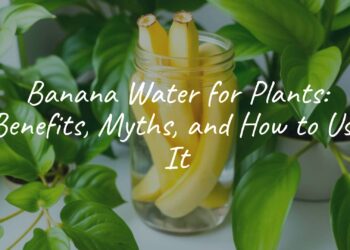Growing herbs indoors is an easy task that does not require any special gardening skills or professional experience in the horticultural field. In fact, there are numerous advantages that come with it. Not only you can have herbs available for your cooking endeavors all year round, but you are genuinely saving money and improving your interior space.
Access to fresh essential herbs surely does enhance home-made meals and allows cooking enthusiasts to embrace challenging recipes and experiment with flavors. Moreover, you do not need an outdoor garden in order to grow herbs and make them flourish. You may do a small redesign or use the available space in your kitchen to conveniently accommodate planting containers, pots, and windowsills.
Here are a few key tips and tricks that would help you establish the perfect kitchen garden, along with a list of the best herbs you can start growing indoors right now:
How to Grow Herbs?
Growing a herb from a seed to a fully-developed plant is not always going to work out perfectly. Just like any other horticulture process, you will get better at it through some trial and error. But do not be discouraged. Proper care and regular plant tending guarantees the growth of healthy and delicious herbs, that could be harvested no matter the season. As a start, you need to figure out which herbs you would like to grow, and then invest in relevant seeds. Garden centers, nurseries, or local farmers’ markets are the perfect places to start looking.
Herbs can really improve the taste of any meal, however when it comes to growing – their delicate nature requires attention and extensive care. Soft herbs (e.g. basil, chives) would thrive on warm and sunny spots. Woody herbs (e.g. thyme, sage, rosemary) are resilient, thus they need a hot and dry placement and a lot of water. In conclusion, before you start growing, make sure your plants have sufficient light, heat, and water access, a good drainage system, and do not forget to prune the woody herbs regularly.
How to plant the herbs?
There are many factors to be taken into consideration when it comes to planting herbs indoors. Lucky for all the herb-growing enthusiasts with less experience, we have gathered and structured all the important information for the planting process:
- Container choice is vital because herbs need space to grow undisturbed and develop deep their root systems. Elongated pots and containers could do the trick, as they provide sufficient depth and space for herbs to flourish.
- Soil types and qualities concern many home growers. Fertile garden soil with good drainage is perfect for this type of greenery. Herbs are not really picky, however, most would grow best in a neutral to alkaline soil.
- Compost plays a crucial role in plant growth, especially when it comes to delicate herbs. Choose loam-based compost and add up ¼ of gritty and drained compost. Perlite and coarse grit are great for herbs. Keep the compost slightly moist.
- Repot when needed. If your herb looks sloppy and crummy, then it is time to lift the roots and move it into fresh compost. Perennials (e.g. sage & rosemary) are not very picky and they can spend up to a few years in their containers before they need repotting.
- Care and attention are important factors in plant growth. Make sure you are watering the herbs on a daily basis, keep them trimmed to avoid bolting, situate them well – they need a lot of natural lighting and heat. Do not overcrowd the herbs, allow them to grow undisturbed by giving them enough space to breathe, develop roots, and grow healthy.
What fertilizers to use?
Herbs are fragile plants that demand leafy growth encouragement. To make the best of soil enrichment indoor herb growers use balanced fertilizers and strictly avoid flower promoting fertilizers rich on potassium.
Loam-based compost is considered the best for growing herbs. Small additions of perlite and coarse grit could further improve the soil. Herbs need little fertilizer so no need to put all your efforts on feeding. In fact, be careful not to over-feed your plants, because they can lose some of their flavor concentration qualities.
The 7 Herbs You Can Grow Indoors All Year
All cooking professionals could spot the food flavor difference between using dry herbs from a store-bought package and lush freshly-harvested herbs, grown at home. Now is the time to step up your cooking game and start your kitchen garden.
Lucky for all herb lovers, most herbs can thrive indoors all year round:
1. Chives
Chives are a great addition to any indoor garden. The herb is perennial and easy for cultivation. Its beautiful purple blossoms are an amazing decoration for any balcony, window, or kitchen/living space.
The flowers are used as garnishes, and the bulb and leaves can also be consumed. The fact that the whole Chives plant is edible, makes it versatile. It has a light flavoring that is perfect for summer dish specialties and compliments potato salads, omelets and soups.
The growing process is simple as chives are low maintenance. You have to simply plant them in a pot and water them on a daily basis. Chives need a lot of natural sunlight so make sure you find a sunny spot for their container.
2. Basil
Basil is probably one of the most famous and commonly used ingredients in modern-day cooking. It is the main ingredient in different kinds of pasta and Italian dishes, Mediterranean specialties, summer salads, and cheese-based meals. Basil originates from India but is widely used in European cuisine, and extremely cultivated on British soil.
The adaptable characteristics of this herb make it a valuable addition to your indoor garden. Basil is an easy-grown plant that needs fertile soil, as well as a lot of heat and lighting to thrive. It is an annual aromatic herb that will spice up your recipes and decorate your kitchen windowsills.
3. Rosemary
Rosemary is a nutritious and health-beneficial herb that is often associated with medicine and spa/cosmetic procedures. The herb’s distinctive flavor is often used for stuffings. Rosemary goes really well with roast meat dishes and perfectly matches up with the chicken and lamb taste.
This shrub is easily grown indoors, and its evergreen qualities make it a great decoration for your kitchen or balcony. Keep your home garden freshened up with a fragrant plant that is pest resistant, and also blossoms white, blue, pink, and purple flowers. The growing conditions include a well-drained soil and a sunny placement with access to sufficient heat and natural light.
4. Oregano
Oregano is one of the most appreciated and commonly used herbs in modern culinary. Its flavor qualities are known to provide that authentic Italian dish flavor. The herb is also widely used in the traditional cuisine of Mexico, Europe, Central America, and the Middle East. Dry oregano leaves are perfect additions to tomato sauces, stews, meat, and soups.
The best conditions to grow oregano at home would include a south-facing window. Moderate to strong lighting would assure a thriving home-grown plant. Watering practices with the oregano plant are simple – never let the soil deplete completely, but only water when the soil surface is dry.
5. Parsley
Parsley is a very popular herb, used extensively in traditional British dishes. It is also a common must-have in Eastern Europe and Middle Eastern cuisine. The herb is an excellent addition to spring and summer salads, fish dishes, and stews. Parsley is also widely used as a garnish and food decoration.
This herb grows best in fertile parched soil and requires irrigation twice per week. For a high parsley quality, make sure to grow in dry weather conditions, preferably during hotter seasons when the natural sunlight is at its peak. Water once a week, just enough to moisten the roots.
6. Thyme
The thyme plant is famous with a versatile flavor. The taste and smell varieties of this herb make it a precious ingredient that finds itself on recipes from all around the globe. It has distinctive small leaves and trailing stems, and it has a great homey vibe that any indoor garden should have.
Thyme is a sun-loving herb that loves warm weather. It would thrive in areas with east or west-facing windows. As a great addition to your indoor garden, it should be planted in a pot with fast-draining soil. Water the herb when the soil surface is dry but avoids overall wilting.
7. Sage
Sage foliage has a peppery and savory taste that could spice up any dish. The evergreen herb is exceptionally cherished and widely used in British cuisine. Its intense flavor strengthens as its leaves grow bigger. Food that goes well with sage is pork meat and stuffing.
Growing sage indoors comes with the benefit of having a great decoration, as it is a green, white and purple colored plant. Pot it in a well-drained area with lots of sunlight, and you can grow and pick it all year round. Sage is a drought-tolerant herb and needs just a small amount of water.















![What to with Scrap Metal? [infographic]?](https://facts-homes.com/wp-content/uploads/2019/07/645413-POPYOV-391-120x86.jpg)






